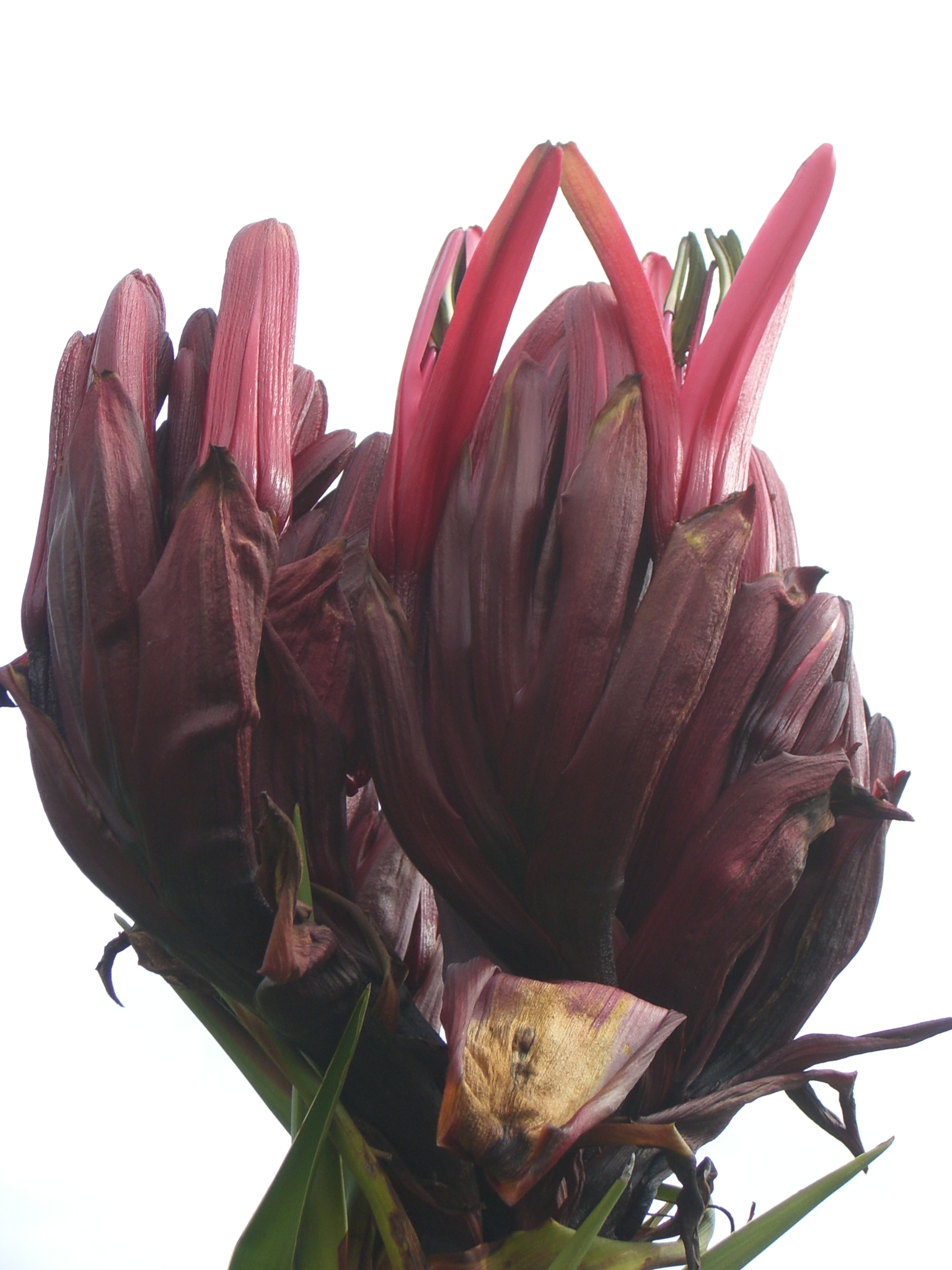
Giant rosette plants, stems very short; roots thick, fleshy. Leaves radical, numerous, dorsiventral, more or less succulent, with a brown, tubular tip that withers to leave a ragged apex. Inflorescence a large scapose, compound oblong branched, or globular compound raceme, with numerous sheathing bracts. Flowers bisexual, regular, 3-parted, each with a conspicuous bract. Sepals and petals united at base to form a tube enclosing the ovary, the free parts spreading. Stamens 6; filaments linear-subulate, somewhat enlarged at base, joined to the perianth for about half their length, inserted into a pit at base of the anther; anthers opening longitudinally, 2-chambered. Ovary inferior, 3-chambered; ovules 40-50 per chamber; style 1, stigma 3-angled. Fruit a large loculicidal capsule. Seeds winged, flattened.
Formerly placed in the Agavaceae or Liliaceae (broad sense). It is however not particularly close to these families and has affinities with the Dracaenaceae and Phormiaceae. Both species are grown in gardens in temperate to subtropical areas.
1 genus of 2 species, endemic to E Australia.
Large fleshy rosettes that have leaves with a tubular tip that withers to leave a ragged apex.
Forster (1995).
Source: (2005). Doryanthaceae. In: . Horticultural Flora of South-eastern Australia. Volume 5. Flowering plants. Monocotyledons. The identification of garden and cultivated plants. University of New South Wales Press.
